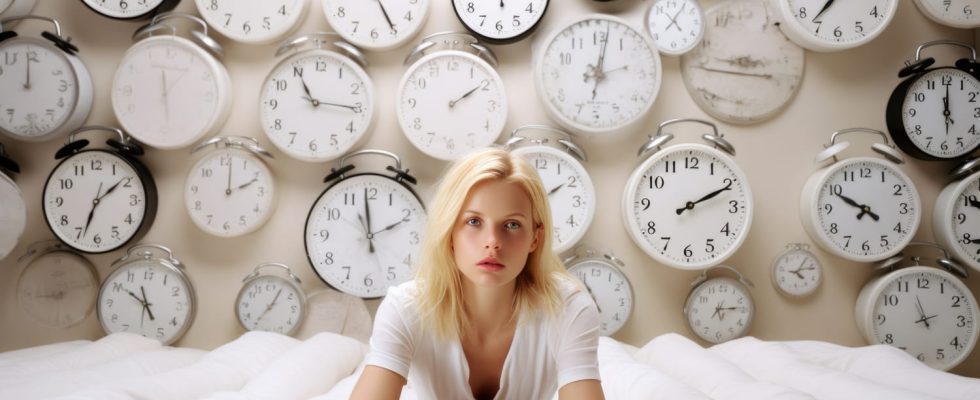The sleep cycle is made up of 4 phases: falling asleep, slow-wave sleep, paradoxical sleep and waking up. Schema, definition and duration.
THE sleep occupies almosta third of our lives. Each night, several sleep cycles follow one another, broken down into 4 phases :
- Falling asleep
- slow sleep which includes light slow-wave sleep and deep slow-wave sleep
- Paradoxical sleep (Rapid eye movement or REM)
- Awakening
THE deep sleep is especially present in the first half of the night while the sleeps light and paradoxical are more abundant in second half of the night.
How long is a sleep cycle?
A sleep cycle lasts approximately 90 minutes. There are approximately 3 to 6 cycles per night. Each cycle begins with light sleep and this ends with paradoxical sleep. Sleep cycles vary with age: deep slow-wave sleep time tends to decrease with aging. “When you wake up, for example, 20 minutes before your alarm, it is better to get up rather than go back to sleep and start a new cycle. Waking up risks interrupting a cycle and being too abrupt“, advises Dr. Marc Rey, neurologist and President of the National Institute of Sleep and Vigilance (INSV).
Diagram of a sleep cycle
The falling asleep phase: 5% of sleep time
The falling asleep phase corresponds to the transition period between the waking state and the sleeping state. Breathing becomes slower and muscles relax. In this half-sleep phase, we can have the feeling of “falling” into the void or having jolts. It generally lasts between 5 and 20 minutes (5 to 10% of sleep time). Beyond 30 minutes, it can lead to insomnia. It is advisable to talk to your doctor about it.

The slow-wave sleep phase: 75% of sleep time
During the slow-wave sleep phase, the electrical activity of the brain slows down. “Normally, when we are in a calm waking state, the brain has electrical activity with a frequency of 8 to 12 hertz. When we are asleep, the brain has very slow electrical activity, reaching 1 hertz during deep slow-wave sleep.“, says Dr. Marc Rey.
► The light slow-wave sleep phase represented almost half of the time spent sleeping. It is characterized by a slowing of brain activity. During this phase, we wake up easily.
►The deep slow-wave sleep phase composes approximately 20% of sleep time. During this phase, brain activity is very slowed down, breathing and heart rate are regular. The sleeper plunges into a state where his brain is increasingly insensitive to external stimulation (noise, light, etc.). We then wake up with difficulty.
The paradoxical sleep phase (REM): 20% of sleep time
This phase is also called “rapid eye movement sleep” (“rapid eye movement” or REM) and it constitutes approximately 20% of sleep time. Brain activity is therefore more intense and is accompanied by eye movements. “During REM sleep, the individual has brain electrical activity as if he was awake or barely asleep. However, from a behavioral point of view, the individual sleeps deeply and his muscles are paralyzed. This is why this phase is called paradoxical sleep.explains our interlocutor. Because the individual simultaneously presents signs of deep sleep and signs of wakefulness“.
What is the phase of restorative sleep?
THE deep slow-wave sleep is the phase more restorative for the organism. During this phase, the body recovers most of the physical fatigue accumulated during the day.
In which phase do we dream the most?
We dream all night long. “On the other hand, dreams are rarer during slow-wave sleep than during REM sleep. Indeed, it is during paradoxical sleep that dreams are the most abundant, the richest and the most vivid.“, explains the neurologist.
Thanks to Dr Marc Rey, neurologist specializing in sleep and President of the National Institute of Sleep and Vigilance (InVS).
